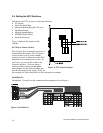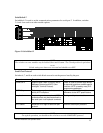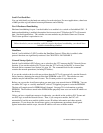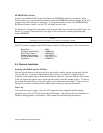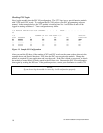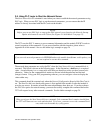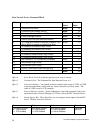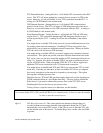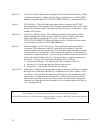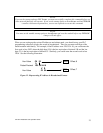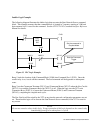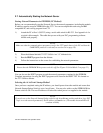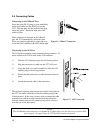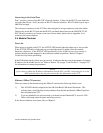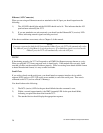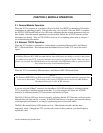
CTI 2572 Installation and Operation Guide
22
Offset 6-7 IP Address Offset 6 should contain the high 16 bits of the module IP address. Offset
7 should contain the low 16 bits of the IP address. An IP address of 0.0.0.0 (0000
0000 hex) or greater than 223.255.255.255 (DFFF FFFF hex) is will return an error.
Offset 8 TCP/UDP Port - This will be the port number used to connect to the 2572 PLC
Server application. The examples in this manual assume that this will be set to 1505
decimal. You should use this value unless you have a reason to do otherwise. A port
number of 0 is invalid.
Offset 9-10 IP Address of Default Router - This identifies the address of the router to which
unknown IP addresses will be directed. Offset 8 contains the high 16 bits of the
address and Offset 9 contains the low 16 bits. An address greater than
223.255.255.255 (DFFF FFFF hex) will return an error. If you do not have a router
on your network, set this to 0.0.0.0 (0000 0000 hex).
Offset 11 Maximum Number of TCP Connections- This specifies the maximum number of
concurrent TCP connections to the PLC server that will be allowed. Once the
maximum number has been attained, the 2572 will reject further attempts to connect
until a connection is relinquished. Once a connection is properly closed, the slot is
available for another connection. If you set the value in this word to 0, then the 2572
will use the default module value (8). You may set this to a number less than 8 to
limit access. You may also increase the number beyond 8 as follows:
• Increase the number by 1 for each unused Client connection (Up to 8),
• Increase by 2 if you disable the Echo Servers (see offset 4),
• Increase by 1 if you disable UPD Server (see offset 4).
Offset 12-13 Subnet Mask - Specifies the subnet mask assigned to this network. Offset 12 contains
the high 16 bits of the mask and Offset 13 contains the low 16 bits. If offset 12 and
13 contain a value of 0, then the subnet mask will default to the standard for the IP
address class. A subnet mask must contain all 1’s in the network portion of the IP
address and must allow at least 2 bits of host address. In addition, the subnet mask
cannot be set so that the derived host address is 0 or a broadcast address (all bits set
to 1). See Appendix D.
NOTE:
All computers on a physical network must use the same Subnet mask and
Network ID; otherwise, addressing and routing problems can occur. Host ID’s on the same network
must be unique.



